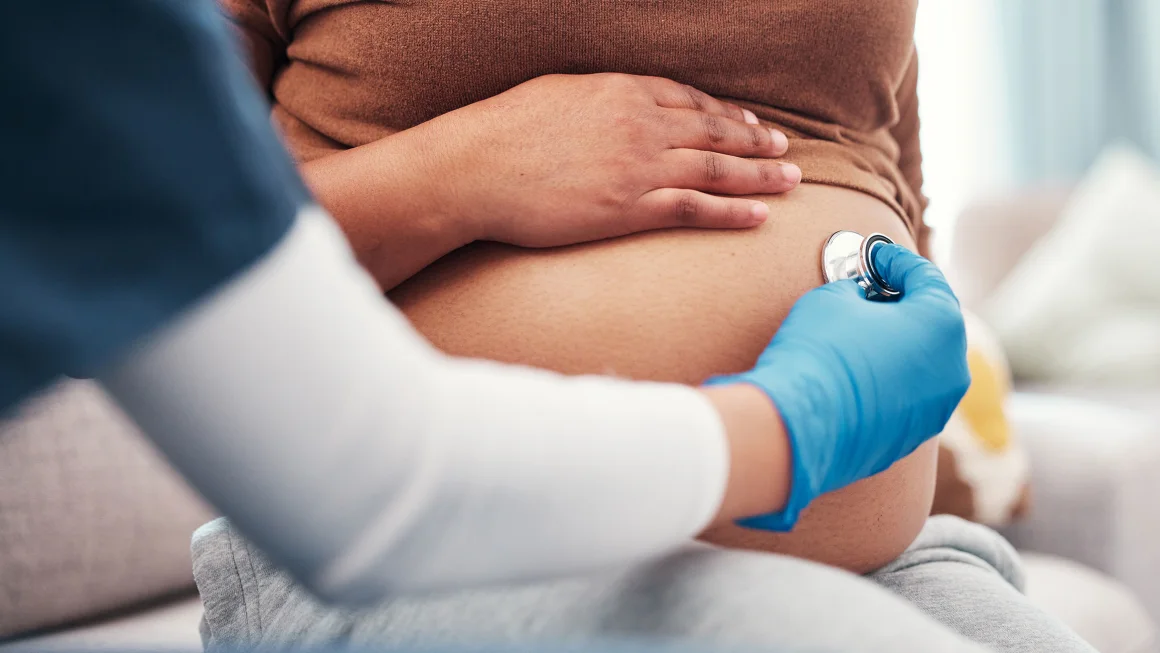- Sunday, 28 April 2024
New study challenges scale of maternal health crisis in US
By Deidre McPhillips and Jacqueline Howard, Mar 13: Hundreds of women in the United States die from complications related to pregnancy, childbirth and the time after giving birth each year, and the country’s high maternal death rate makes it an outlier among developed nations.
Federal data shows that maternal mortality has surged in the US in recent years, especially during the COVID-19 pandemic, and experts have expressed concern that the problem is getting worse. In 2022, the Biden administration launched a plan to address the maternal health crisis facing the nation, highlighting that pregnancy and childbirth are “traumatic experiences” for many and the “preventable deaths, life-altering complications, and untreated mental health and substance use disorders” that have persisted.
But a new study suggests that maternal mortality rates in the US may be lower and more stable than federal data suggests – though still very high.
Using a ‘definition-based approach’
In 2003, in an effort to better track and understand maternal mortality in the US, the National Center for Health Statistics – part of the US Centers for Disease Control and Prevention – requested that states add a “pregnancy checkbox” to death certificates to indicate whether a deceased woman was pregnant at or around her time of death.

In 2003, the CDC asked that states use a checkbox on standard death certificate to indicate whether a woman was pregnant at the time of her death or died within one year of her pregnancy. From US Government Accountability Office
An analysis that prompted the strategy suggested that about 30% of pregnancy-related deaths were being missed before the introduction of the checkbox. By 2018, all 50 states had implemented this change on death certificates.
In a new study, published Wednesday in the American Journal of Obstetrics and Gynecology, a group of researchers – from the University of British Columbia in Canada and other institutions around the world – conducted an in-depth analysis of mortality and natality files recorded by the National Center for Health Statistics from 1999 to 2021.
Their findings suggest that reliance on the pregnancy checkbox may have led to an increase in misclassified maternal deaths, resulting in an overestimation of maternal mortality and trends over the past few decades in the US.
“The pregnancy checkbox was introduced as a means to correct the underestimation of maternal mortality, but we’ve gone from a 30% underestimation to like a 300% increase in maternal mortality rate, which is a substantial overestimation,” said Dr KS Joseph, a professor with the University of British Columbia’s Department of Obstetrics and Gynecology and the School of Population and Public Health, who was the lead author of the study.
The new study suggests that 38% of direct obstetrical deaths and 87% of indirect obstetrical deaths from 2018 to 2021 were identified because of a positive pregnancy checkbox, and these deaths were associated with “increases in less specific and incidental causes of death.” However, when the researchers identified maternal deaths using a “definition-based approach,” with at least one mention of pregnancy among the multiple causes of death, the results were significantly different.
Using the methodology from the National Vital Statistics System, the maternal death rate increased from about 9.7 deaths per 100,000 live births in 1999 to 2002 to 23.6 deaths per 100,000 live births in 2018 to 2021, according to the new study. Using the researchers’ alternative methods, the maternal death rate changed only from 10.2 deaths to 10.4 deaths per 100,000 live births in the same period. They found that deaths from direct obstetrical causes, such as preeclampsia, actually decreased.
Several previous studies, including a 2020 report published by the CDC, have found that maternal mortality rates appeared to significantly increase after the introduction of these checkboxes. However surveillance methods have continued to be refined, and recent reports from the National Center for Health Statistics don’t compare trends in maternal mortality with data before 2018.
By presenting maternal death rates as an average for 2018 to 2021, the new study also doesn’t account for potential shorter-term trends – including impacts of the COVID-19 pandemic.
The latest report from the National Center for Health Statistics says that 1,205 women in the US died of maternal causes in 2021. The maternal mortality rate had jumped more than 60% over the course of two years, from about 20 deaths per 100,000 live births in 2019 to about 33 deaths per 100,000 live births in 2021.
Experts agree that the surveillance methods aren’t perfect but stress that high maternal mortality rates remain an important issue to address in the US.
“We feel fairly confident that there has been an increase [in maternal mortality], particularly during the pandemic,” said Robert Anderson, chief of mortality statistics for the CDC. “We went from underestimating to overestimating, so we had to make that correction. But I feel fairly confident that the increases since 2018 are real.”
There could be some variability in the quality of reporting over the years, he said, but it would be “non-statistical variability.”
Improving the data on the front end
The pregnancy checkbox included on death certificates in the US asks whether the person was pregnant or recently pregnant but does not address whether the pregnancy contributed to the death. Experts say that clarifying the purpose of the checkbox in a more direct way could help improve the quality of data collection.
When it comes to the use of checkboxes in maternal death counts, “the pregnancy checkbox shouldn’t be taken as proof of a pregnancy, but the case needs to be looked at further before it’s added to the total,” said Dr Elliott Main, a professor of obstetrics and gynaecology at Stanford University School of Medicine and the former medical director of the California Maternal Quality Care Collaborative, who was not involved in the new study.
In March 2022, the CDC sent out additional guidance to death certifiers, which resulted in some states implementing a process in which certifiers confirm additional information for maternal deaths. And there’s an ongoing effort to link maternal deaths with birth records or fetal death records to confirm the case, or to flag records without a match for an extra round of review from death certifiers.
“What we really want to do is improve the data on the front end, rather than try to create a workaround to improve the information on the back end,” Anderson said.
Texas has undertaken significant efforts to refine the data it collects on maternal mortality, developing a four-part “enhanced method” for identifying maternal deaths that has been in place for years.
The pregnancy checkbox has helped identify some maternal deaths that may have otherwise been missed, but it has also “proven to be open to error,” said Savannah Larimore, manager of maternal mortality and morbidity epidemiology with the Texas State Health Department.
As the new study suggests, Texas has seen general stability in maternal mortality rates in recent years.
“From 2013 to 2019, we’re looking at fluctuation between 17 deaths per 100,000 live births to 20.7 deaths per 100,000 live births,” Larimore said, citing the latest report. “We do see an increase in 2020 and 2021, and we did supplemental analyses showing that some of that can be attributed to Covid-19-specific mortality.”
Overall, Main says, “it is easy to identify direct maternal deaths – like the deaths from haemorrhage and hypertension, and the deaths from blood clots, those are clearly related to pregnancy. But there’s considerable variation around including causes not directly related to the pregnancy, the so-called indirect causes of maternal death, such as cancers, heart disease or overdoses.”
Over the past decade, a number of studies have shown that direct maternal deaths around delivery have fallen, Main said. For instance, a study published last year found that the rate of pregnant women dying of delivery-related causes in the hospital appears to have declined significantly, by more than 50%, across the United States from 2008 through 2021.
“We and many others have done a lot of work on addressing haemorrhage and hypertensive disorders around birth, and I think that’s helped to reduce direct maternal deaths,” Main said of his own work within the California Maternal Quality Care Collaborative.
“Where we have not spent as much effort – and where there are more challenges – is in the postpartum period,” he said. “CDC data suggests that the biggest rise in maternal deaths is in the year following birth, but the postpartum period is also when the data is messier and interventions are much harder.”
‘Immense health inequities’ remain
Even though the new study suggests that the nation’s overall maternal mortality rate is not rising as much as previous data has indicated, the United States still appears to have a higher maternal mortality rate than other high-income countries around the world, “just not as terrible,” Main said.
Also, the study emphasizes findings consistent with federal data that shows significant disparities in maternal death rates, especially among Black women in the US.
“Many of the deaths that are detected through the checkboxes are correct,” said Dr Emre Seli, chief scientific adviser for the maternal and infant health nonprofit March of Dimes, who was not involved in the new study.
“We agree that we should invest in researchers doing better surveillance of maternal deaths,” he said. “But the undisputable conclusions of this publication would be that we’re not doing any better in the maternal death scenario today compared to 20 years ago, and there are immense health inequities in the matter.”
Seli said there is still a lot of work to do to reduce the rate of maternal deaths in the United States and to better track the number of maternal deaths that occur.
“It is important to have surveillance so that we can measure in a consistent manner how interventions and policies are taking effect. We know from our own reports – the March of Dimes report titled ‘Where You Live Matters’ on maternity care deserts and the crisis of access and equity – we know that more than 5 million women live in counties with no to limited access to maternity care services,” Seli said.
“We know that overall maternity care in the United States is not where it should be,” he said. “And we know Black women are much more likely to die when they’re pregnant compared to White women, and this is also shown in the current paper, even when removing the checkbox utilization. So we really do think there’s a lot to be done in making maternal care accessible to all throughout the country.”











-original-thumb.jpg)





